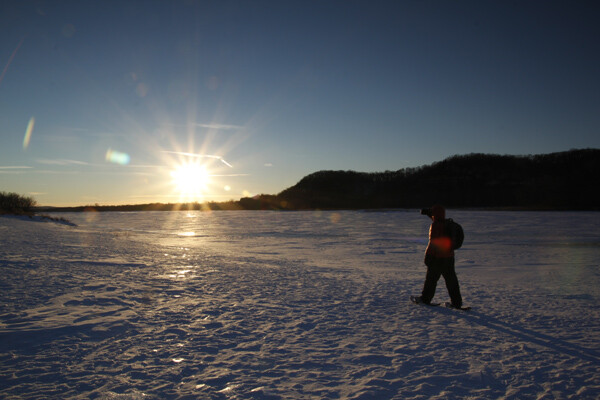Flare can be a polarizing topic in photography, and many articles have been written about how to prevent or eliminate lens flare. But there are many situations where you can use lens flare creatively to enhance your photographs.

What is Lens Flare?
Lens flare and sun flare are terms that are often confused in photography literature. Sun flare generally refers to turning the sun into a starburst shape, while lens flare is an artifact of stray light bouncing around the lens and being recorded by the sensor. This article will focus on lens flare, but you can read more about Using Sun Flares to Create Dramatic Images.
Lens flare comes in several varieties but all are related to light (generally from the sun) bouncing around inside the lens. It can include circular, or curved areas of light, around the sun, somewhat like a natural sun dog, as well as the more common stray flashes of light, or dots and dashes of light in a line.

Most articles are full of advice for how to avoid lens flare, which is a good place to start if you then want to do the opposite. The first strategy for avoiding lens flare is to use a lens hood on your camera, which blocks light coming into the camera lens from the sides. The second strategy is to limit the use of filters in front of your lens, as additional glass, especially low-quality glass, can lead to more flare. There is some debate about whether a UV filter alone helps to eliminate or accentuate flare, but the pricier the glass, the less likely that there would be adverse effects.
Creating and Controlling Lens Flare
So, if you want to create lens flare intentionally in an image, you should first remove your lens hood. This allows more sunlight directly into your lens. As for filters, you can experiment with removing your filters all together or trying to combine more than one filter (such as a UV filter and a polarizer) at a time. I have not found much difference between keeping or removing my UV filter, so I tend to keep it on for ease and lens protection.

Consider using a zoom lens rather than a prime lens when shooting for flare. Zoom lenses tend to have more internal elements than prime lenses, which create more potential to interfere and add flare. Zoom lenses also give you a range of focal lengths and compositional options to allow you to best place and manipulate the flare exactly where you want it in your image.
You will need the sun in, or near the edge, of your frame to create successful flare. This is easier to accomplish in the early morning or late afternoon when the sun is lower in the sky. Be careful any time you are shooting directly into the sun, as there is potential to damage your camera’s sensor and your eyesight. Be sure to wear your sunglasses and compose shots quickly. You can often get flare effects with just a hint of the sun coming in from the top edge of your image, which will also reduce potential damage to you or your camera.
Flare effects are often more pronounced at narrower apertures, like f/22, as the narrower opening in the lens gives the light more potential to scatter. But, as you can see from the comparison shots below (at f/8 top and f/22 bottom), you can get lens flare at many apertures.

Shot at f/8

Shot at f/22
Depending on your subject, you may need to shoot in manual or use exposure compensation to overexpose your scene (positive values) relative to your camera’s sensor. Because lens flare requires additional light entering your camera, your subject might otherwise appear dim or darker than intended. Meter for your subject (or set exposure compensation to a positive value), and you will have a correctly-exposed subject against the extra brightness of the background flare.
Creative Uses of Lens Flare
Flare has become trendy as a way to emphasize the brightness or perceived warmth of a scene. Lens flare is even starting to make inroads in movies, as popularized in J.J. Abrams’ Star Trek reboot, where he uses lens flare and lighting to cement the futuristic nature of the film. Post-processing to add lens flare to an image is even common among portrait photographers.
How will you share your flare? Show us in the comments below!

The post How to use Lens Flare to Your Advantage by Katie McEnaney appeared first on Digital Photography School.
You must be logged in to post a comment.